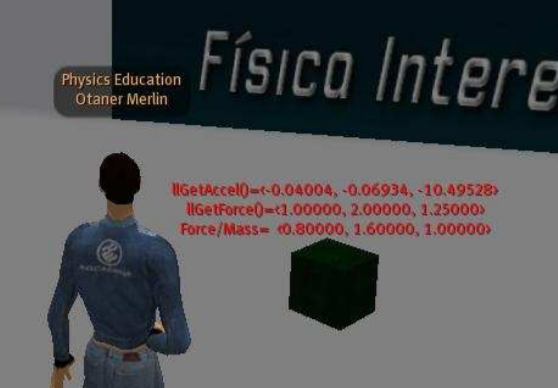Second Life Physics: Virtual, real, or surreal?
PubDate: May 2014
Teams: Universidade Luterana Brasileira
Writers: Renato P. dos Santos
PDF: Second Life Physics: Virtual, real, or surreal?

Abstract
Science teaching detached itself from reality and became restricted to the classrooms and textbooks with their overreliance on standardized and repetitive exercises, while students keep their own alternative conceptions. Papert, displeased with this inefficient learning process, championed physics microworlds, where students could experience a variety of laws of motion, from Aristotle to Newton and Einstein or even new laws invented by the students themselves. While often mistakenly seen as a game, Second Life (SL), the online 3-D virtual world hosted by Linden Lab, imposes essentially no rules on the residents beyond reasonable restrictions on improper behavior and the physical rules that guarantee its similitude to the real world. As a consequence, SL qualifies itself as an environment for personal discovery and exploration as proposed by constructivist theories. The physical laws are implemented through the well-known physics engine Havok, whose design aims to provide game-players a consistent, realistic environment. The Havok User Guide (2008) explicitly encourages developers to use several tricks to cheat the simulator in order to make games funnier or easier to play. As it is shown in this study, SL physics is unexpectedly neither the Newtonian idealized physics nor a real world physics virtualization, intentionally diverging from reality in such a way that it could be called hyper-real. As a matter of fact, if some of its features make objects behave more realistically than real ones, certain quantities like energy have a totally different meaning in SL as compared to physics. Far from considering it as a problem, however, the author argues that its hyper-reality may be a golden teaching opportunity, allowing surreal physics simulations and epistemologically rich classroom discussions around the what is a physical law? issue, in accordance with Papert’s never-implemented proposal.


